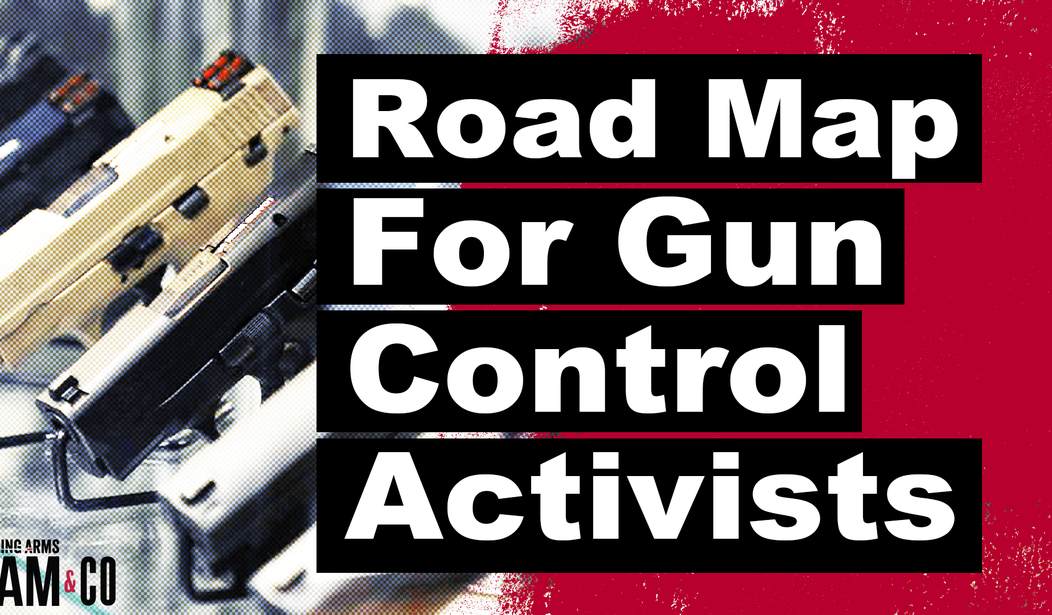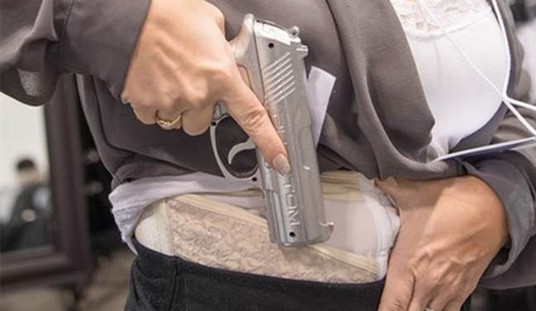In the wake of the midterms, Democrats might not have as many opportunities to impose legislative limits on our Second Amendment rights, but the RAND Corporation is still providing anti-gun activists with a guide to gun control laws they believe might be permissible, even after the Supreme Court’s decision in NYSRPA v. Bruen.
You’ll probably recognize many of the names associated with the RAND report, given the fact that they’re regularly quoted by legacy media outlets in support of new and existing gun control measures. Harvard’s David Hemenway, Saul Cornell of Fordham, and UCLA law professor Adam Winkler were all a part of the confab that laid out a road map for gun control groups to follow in the wake of Bruen. The group concedes that the decision is going to make it tougher to enact and uphold restrictions on the right to bear arms, but they also point to “ambiguities” in the decision that they say opens the door to keeping (and putting) gun control laws on the books. For example:
The Court’s determination that New York state’s concealed carry law was unconstitutional was narrowly focused on the use of subjective discretionary standards in issuing permits and seems to explicitly allow for states to use objective suitability and perhaps even good moral character standards that could serve similar risk management objectives as the former discretionary standards.
Does it really? U.S. District Judge Glenn Suddaby doesn’t think so. In his decision granting an injunction against many aspects of New York’s Concealed Carry Improvement Act, Suddaby declared that New York replacing one subjective standard (a “justifiable need” to carry) with another (whether someone has the “good moral character” to carry) is untenable.
The “good moral character” requirement is just a dressed-up version of the State’s improper “special need for self-protection” requirement.
… In sum, this Court has certainly found historical support for a modern law providing that a license shall be issued or renewed except for applicants who have been found, based on their past conduct, to be likely to use the weapon in a manner that would injure themselves or others (other than in self-defense). This standard is objective, easily applied, and finds support in numerous analogues that deny the right to carry to citizens based on their past conduct (including crimes, demonstrations of mental illnesses, and dangerous behavior). Unfortunately, this is not the law that the New York State Legislature passed.
Objective standards may be found to be constitutional, but Suddaby says that subjective standards are a no-no, unlike the academics who put together RAND’s report.
There was one conclusion that these analysts reached that I agree with; bans on semi-automatic firearms and “large capacity” magazines aren’t likely to stand up to court scrutiny.
… the Court has found that a weapon in common use cannot be considered dangerous and unusual. This reasoning creates a potential regulatory challenge: Unless a new dangerous technology is quickly determined to be dangerous and unusual, and regulated as such, it will no longer be subject to such regulation once it becomes popular and therefore in common use. States concerned with restricting access to new, more-dangerous weapon technologies would need to design mechanisms for quickly preventing their distribution and adoption by large numbers.
Even though they admit that a ban on so-called assault weapons would likely be ruled unconstitutional under Bruen, the authors of the RAND report suggest that there may still be a way to prohibit at least some law-abiding Americans from possessing them; a “graduating permit system” that “might resemble driver’s license classifications or graduated driver’s licenses, which require increasingly demanding standards and training depending on the type of vehicle (e.g., a person with a license to drive a car cannot legally drive a public bus or large truck) or driving conditions (e.g., some states dictate that adolescent drivers cannot drive at night or with other adolescents).”
Some states and the federal government already have something like a graduated permitting system for firearms. Beginning in July 2019, for instance, residents of Washington state who wish to purchase a “semiautomatic assault rifle” must undergo an enhanced background check and complete special training requirements, requirements distinct from those for purchasers of other types of firearms (Revised Code of Washington § 9.41).
Similarly, in accordance with the National Firearms Act of 1934 and subsequent amendments to it, the federal government regulates all automatic firearms, short-barreled shotguns, silencers, and certain other “destructive devices” differently from most other firearms, requiring, for instance, enhanced background checks and registration of the weapon with the Bureau of Alcohol, Tobacco, Firearms and Explosives. Although the Court would likely consider semiautomatic rifles and high-capacity magazines as in common use and thus covered under Second Amendment protections, regulations that impose higher standards of control over the acquisition, use, and carrying of specific types of weapons may be constitutional under Bruen.
The Supreme Court rejected the idea of tiered scrutiny when it came to determining the constitutionality of gun control laws, so I don’t know what would give these folks the idea that the courts would be any more amenable to imposing a similar test on commonly-owned firearms. It seems far more likely to me that SCOTUS would strike down Washington State’s law rather than allow it to stand, though I suppose we’ll have to wait and see what, if any, action the Court takes when that particular legal challenge arrives at its doorstep.
The RAND report seems like it’s designed to reassure gun control advocates in the wake of the Bruen decision, but given that at least one of its major findings has already been overruled by a federal judge I don’t think it’s that convincing of a document. And honestly, given that the gun control lobby and their political allies have never been overly concerned with infringing on anyone’s rights before now, I don’t think they really care about the likelihood of their gun laws standing up in court. Oh sure, they’d love to see it happen, but they’re not going to go out of their way to write their post-Bruen gun laws with an eye towards respecting the right to keep and bear arms. They’ll keep pushing for their gun bans, limitations on the right to bear arms, and onerous burdens to become a gun owner even if they know that SCOTUS is going to smack them down. The fight to secure our Second Amendment rights is far from over, and even if gun owners have a great Election Day we’ll still need to be just as involved and engaged tomorrow as we are today.









Join the conversation as a VIP Member